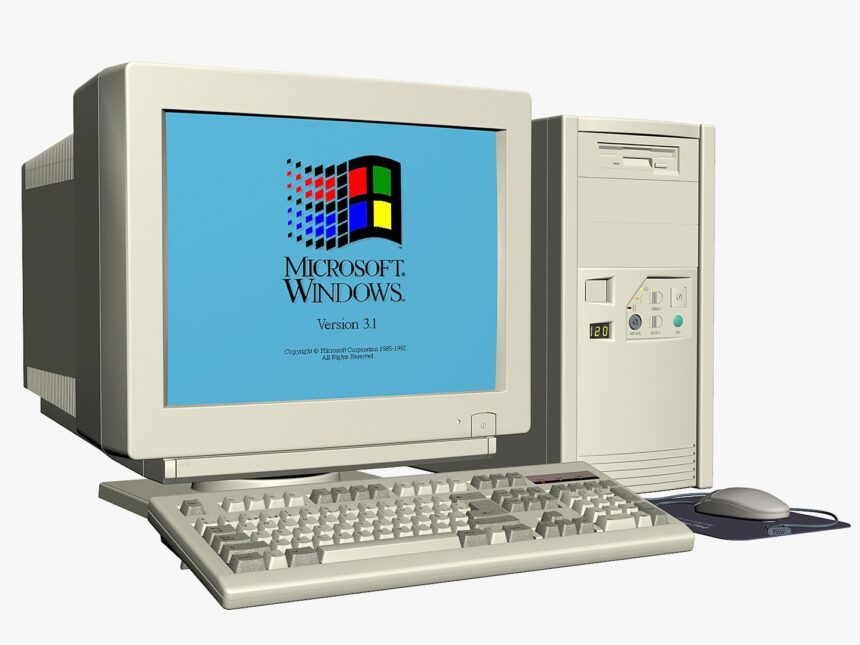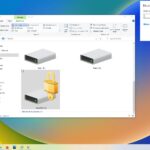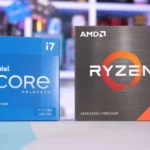Hey, Tech-Savvy Tribe! Your favorite digital lifestyle guru is back, and today we’re going to talk about something that might seem boring but is very important for your safety, the environment, and your peace of mind: what to do with that old computer that’s been sitting in your closet.
Let’s be honest: we all have one (or maybe even more than one). These old digital things hold memories, private information, and, let’s not forget, things that could be dangerous. It’s not only irresponsible to throw away your old computer in the regular trash; it could also have serious effects.
This complete guide will go into great detail about the best and safest ways to get rid of an old computer, including how to wipe its data and eco-friendly recycling options. Use this as a guide to make sure your digital decluttering is done correctly.
The Hidden Dangers of Throwing Away Computers Wrong
Let’s first talk about the “why” before we get into the “how-to.” Why can’t you just throw away that old tower or broken laptop? Here are some good reasons:
Nightmares about data security
Your old computer has a lot of personal information on it, like passwords, bank account numbers, family photos, private emails, and more. You can often get back files that you’ve deleted using software that is easy to find. Think about how terrible it would be if someone got their hands on your private information. If you don’t throw away your devices properly, you could lose your identity, commit financial fraud, or have your privacy violated.
Effects on the Environment
Lead, mercury, cadmium, and brominated flame retardants are just some of the dangerous chemicals that are found in computers. When these things get thrown away, they can leak into the soil and groundwater, which can hurt the environment and possibly hurt people and animals (Source: Environmental Protection Agency – Basic Information about Electronic Waste). Responsible disposal makes sure that these dangerous chemicals are handled and processed in a safe way.
Legal and Moral Issues
Some places have laws about how to throw away electronic waste (e-waste). As responsible digital citizens, we also have a moral duty to protect our personal information and reduce our impact on the environment.
A Step-by-Step Guide to Getting Rid of Your Old Computer Safely
Now it’s time to get down to business. Here is a full, step-by-step guide on how to safely get rid of an old computer:
Step 1: Make a copy of your important files
Before you even think about getting rid of your old computer or wiping it clean, make sure you have backed up all of your important files. This could be papers, pictures, videos, music, or any other information you want to keep. You can use an external hard drive, cloud storage services like Google Drive, Dropbox, or Microsoft OneDrive, or move files to a new device.
Tip: Don’t just back up your data when you get rid of an old device; make it a habit to do it all the time. Things can happen that you don’t expect!
Step 2: Wipe your hard drive (or SSD) securely
It’s not enough to delete files the normal way. You need to make sure that your data can’t be recovered. This means writing over the data on your hard drive many times. Here are some ways:
Using Tools That Come With the Operating System
Most modern operating systems come with tools that let you reset your computer to its factory settings. These tools usually let you securely delete data as well.
Windows: Open the Settings app, then go to Update & Security > Recovery > Reset this PC. Pick “Remove everything” and then “Remove files and clean the drive.” This choice erases your data, which makes it much harder to get back.
macOS: Hold down Command + R while your Mac starts up to put it into Recovery Mode. Choose your startup disk in Disk Utility, click “Erase,” and then pick a security option. “Security Options…” lets you choose how much data to overwrite.
Using Data Wiping Software from Other Companies
If you want to delete data more thoroughly, you might want to use specialized data wiping software. A lot of people choose:
DBAN (Darik’s Boot and Nuke): A free and open-source program that deletes hard drives safely. (Backlink: DBAN Official Website)
Eraser: A Windows tool for securely deleting files and data.
CCleaner: The professional version has a drive wiper tool, but its main function is to clean up the system.
Most of the time, these tools let you overwrite data multiple times to meet different security standards.
Destroying it physically (as a last resort)
If the hard drive doesn’t work or the data is very sensitive, physical destruction may be the safest way to get rid of it. This could mean drilling several holes through the platters of a hard drive or completely shredding it. But be very careful if you decide to go this route.
Tip for the Real World: Don’t forget how important it is to wipe data. Do it right the first time. It’s worth it for your peace of mind!
Step 3: Pick a way to get rid of it
After you have safely erased your data, you can choose from a few different ways to get rid of an old computer:
Programs for recycling electronics
This is usually the best way to get rid of an old computer in an environmentally friendly way. Many electronics companies and stores have free recycling programs, such as Dell’s Reconnect Program and HP Planet Partners. They make sure that your device is processed safely and that valuable materials are saved.
Tip: Look at the websites of big electronics stores and manufacturers in your area to see what they are doing to recycle.
Places to recycle in your area and events to collect e-waste
Your local government or waste management authority may have set up recycling centers or hold e-waste collection events on a regular basis. These are easy ways to get rid of your old computer and other electronics.
Helpful Hint: To find local options, type “e-waste recycling [your city/region]” into a search engine.
Giving to Nonprofits or Charities
If your old computer still works, you might want to give it to a charity or non-profit group. A lot of groups fix up donated computers and give them to people or groups that need them. This can help close the digital divide and give your old device a new life. (Interlink: You might want to look into local charities that will take computer donations.)
Tip: Make sure you’ve completely erased your data before giving it away.
Selling or Trading In
If your old computer is still worth something, you might be able to sell it online or trade it in for a discount on a new one. Many online stores and electronics stores have programs where you can trade in your old items.
Helpful Hint: When you sell or trade in your device, be honest about how old it is and how well it works. And, of course, make sure to erase your data first!
Responsible Landfilling (as a Last Resort)
If you have no other choice, make sure to check your local laws about how to get rid of electronic waste. Some places may have specific rules or designated landfills for getting rid of electronics.
Helpful Hint: Look into all of your recycling and donation options before throwing things away.
Step 4: Take out the batteries and other things that aren’t needed.
Take out any parts that can be easily removed, like batteries, external hard drives, and other peripherals, before giving your old computer to a recycling or donation center. Some recycling programs may have special rules for these things.
Helpful Hint: Look at the rules for the recycling program or donation center you choose.
Things You Shouldn’t Do When Getting Rid of an Old Computer
Let’s talk about some common mistakes to avoid when working with your old computer:
Just Deleting Files: As was said before, this isn’t enough to keep your data safe.
Putting it in the regular trash: This harms the environment and could lead to data breaches.
Ignoring Local E-waste Regulations: Know about any rules that apply to your area.
Donating Without Wiping Data: This puts your private information at risk.
Leaving Batteries Inside: Batteries can leak dangerous chemicals and may need to be recycled separately.
Why This is Important for You Every Day (and in Kigali, Rwanda)
No matter where you are in the world, including Kigali, Rwanda, you should get rid of your old computer in a responsible way. As Kigali’s technology changes quickly and more people use and have access to digital devices, it becomes more and more important to know how to handle e-waste properly. You can protect your privacy, help the environment, and make sure that valuable resources are recovered by following these simple steps.
Conclusion: How to Take Charge of Your Digital Footprint
It doesn’t have to be hard to get rid of an old computer. You can make sure your digital decluttering is safe and responsible by following these steps and being aware of the possible risks and effects on the environment. Let’s all take charge of our digital lives and make smart decisions about how we deal with our old tech.
What have your experiences been like when getting rid of old electronics? Leave your tips and thoughts in the comments below!
https://bigezwehotv.rw/category/trends







